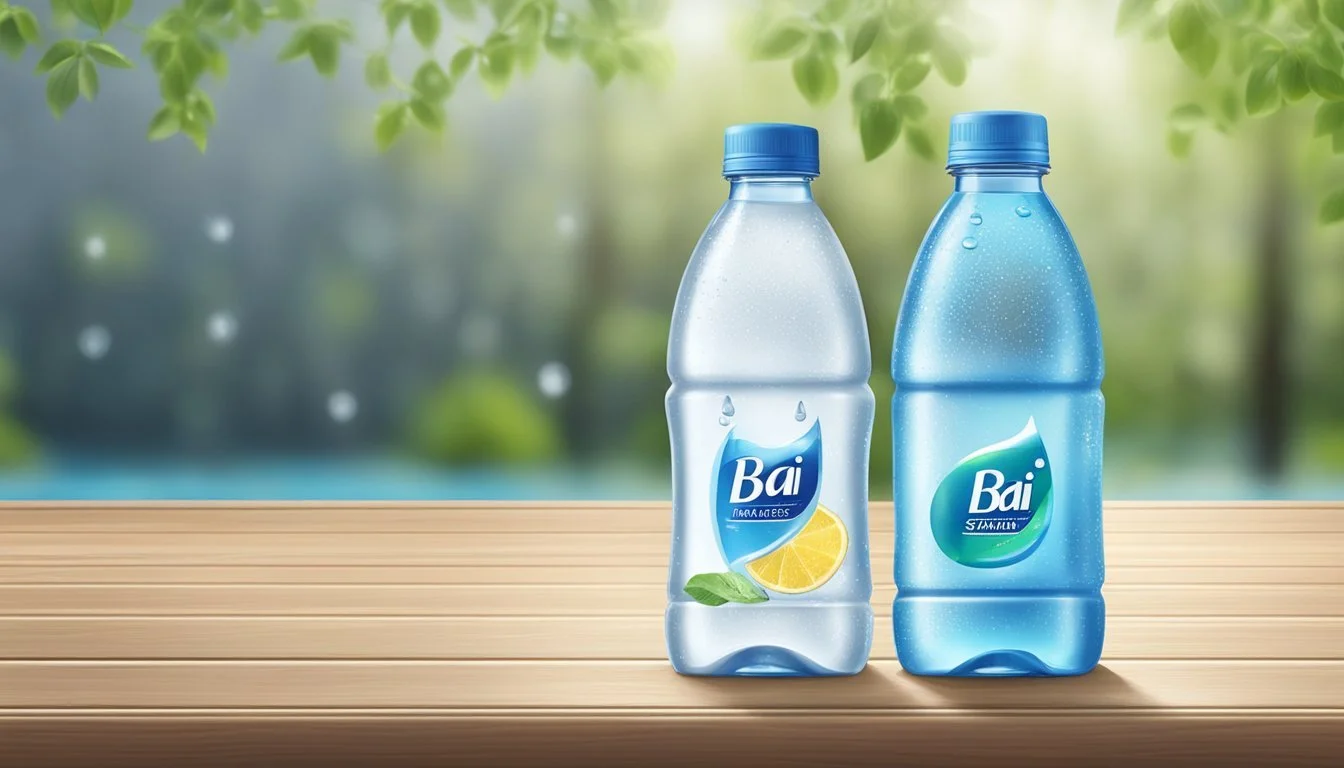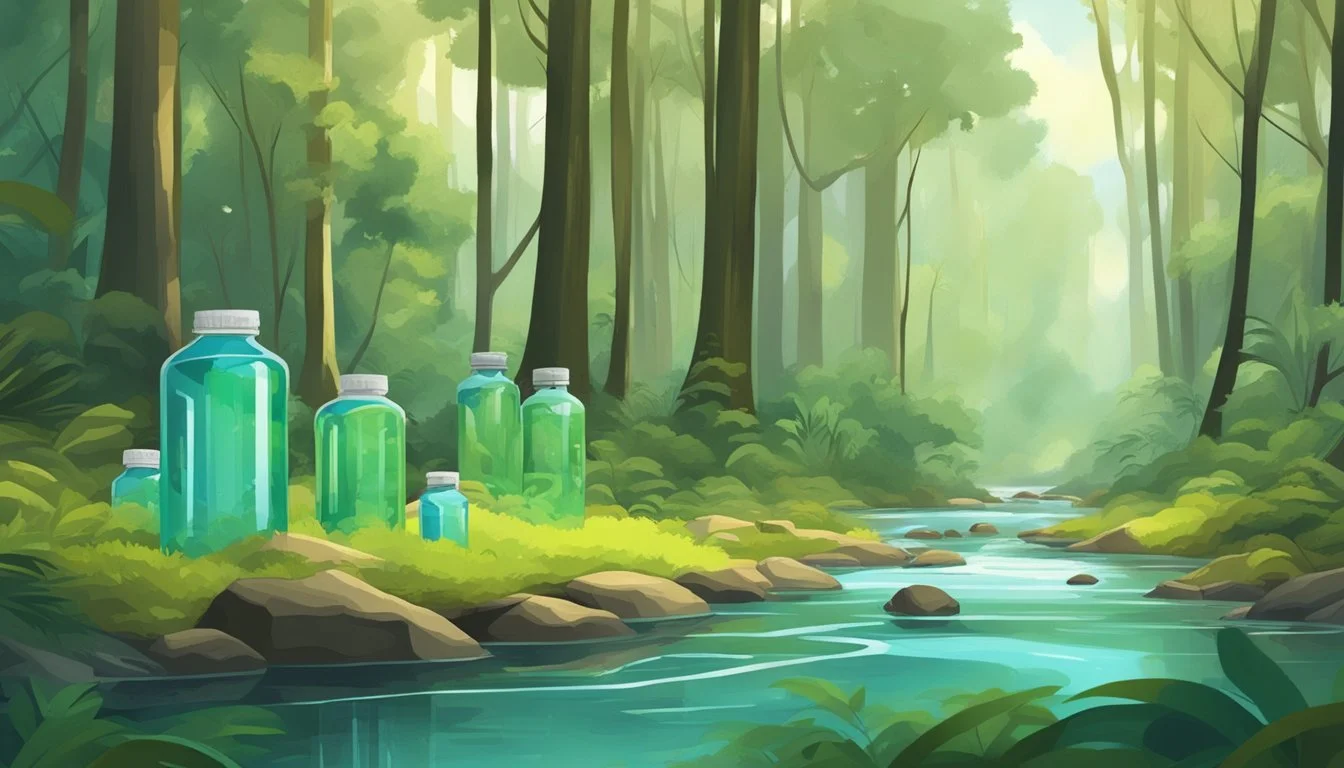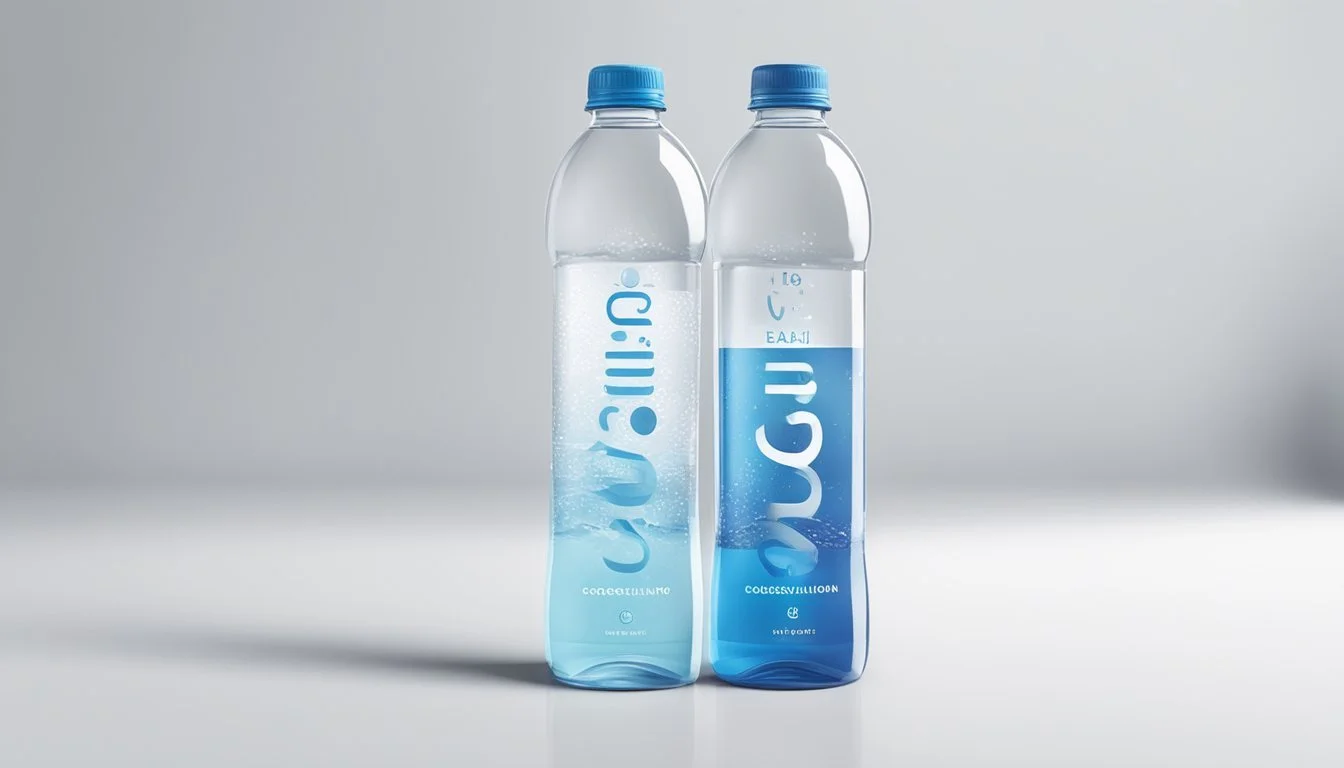Bai vs. Starkey
Which Bottled Water is Better for Your Health?
When choosing the right bottled water, it's essential to consider factors such as taste, nutritional benefits, and overall hydration. Bai provides a unique blend of hydration and nutrients with its infusion of antioxidants from coffee fruit extract and a low calorie count. Each bottle of Bai contains only 1 gram of sugar and is rich in vitamin C, making it a health-conscious choice for those looking to boost their intake of beneficial compounds.
In contrast, Starkey offers pure water sourced from geothermal springs, appealing to consumers who prioritize natural and unadulterated hydration. This brand does not add any sugars or flavorings, focusing instead on delivering mineral-rich water that arises deep from the earth. Its high mineral content provides a distinct taste that stands out among its competitors.
Both Bai and Starkey have their unique strengths. While Starkey prides itself on purity and natural sourcing, Bai combines hydration with additional health benefits, making it appealing for those seeking more than just water. The choice between the two ultimately depends on personal preferences and health goals.
Understanding Bai and Starkey Brands
Bai and Starkey are distinct brands in the bottled water market, each with unique histories and product offerings. They cater to specific consumer needs, from flavored waters to alkaline varieties.
Brand Origins and Evolution
Bai originated in Princeton, New Jersey, founded by Ben Weiss. His vision was to create healthier beverage options. Bai initially made a mark with its antioxidant-infused drinks sourced from coffee fruit. Over time, the brand expanded to include flavored and alkaline waters, gaining popularity for its low-calorie content and bold flavors.
Starkey, on the other hand, traces its beginnings back to the Starkey Hot Springs in Idaho. Known for its natural, geothermal alkaline water, Starkey has built a reputation on purity and health benefits. Starkey's careful bottling process ensures its water maintains its naturally high pH level and mineral content.
Product Range and Varieties
Bai offers a range of flavored waters enriched with antioxidants. These drinks are available in several flavors, combining hydration with health benefits. Bai’s Antioxidant Water features a pH of 7.5 or higher, enhanced with selenium, adding a unique twist to standard bottled water.
Starkey focuses on pure alkaline water, sourced directly from geothermal springs. This water is not flavored but boasts a naturally high pH of around 9, appealing to health-conscious consumers. Starkey’s commitment to minimal processing ensures its water remains as natural as possible, preserving its mineral-rich profile.
Both brands offer distinct products that cater to different preferences, from Bai’s flavorful antioxidant-infused options to Starkey’s pure alkaline water.
Nutrition and Ingredients Analysis
This section provides a detailed examination of the nutritional content, ingredient profiles, and the types of additives found in Bai and Starkey bottled water, highlighting their potential health impacts.
Comparative Ingredient Profiles
Bai and Starkey offer distinct ingredient profiles. Bai includes coffee fruit extract, which provides antioxidants, and natural sweeteners such as erythritol and stevia. Each bottle generally contains 10 calories and 1 gram of sugar.
Starkey, on the other hand, is marketed as pure, natural spring water without any added ingredients. Starkey emphasizes its alkaline properties, maintaining a pH of 9.6. It lacks sweeteners, flavors, or additional nutrients, focusing instead on its source purity.
Feature Bai Starkey Primary Ingredients Coffee fruit extract Spring water Sweeteners Erythritol, Stevia None pH Level 7.5 9.6
Natural vs. Artificial Additives
Bai uses natural sweeteners like erythritol and stevia, avoiding artificial sweeteners and colors. It also includes natural flavorings and extracts. This focus on natural ingredients aims to offer a healthier alternative to sugary beverages.
Starkey does not include any sweeteners—natural or artificial—nor does it have any colorants or preservatives. Its commitment to being an unadulterated, pure spring water beverage means no additives of any kind, offering a simple, clean hydration option.
Nutritional Benefits and Potential Health Impact
The nutritional benefits of Bai stem from its modest caloric content and the presence of antioxidants and vitamin C. The antioxidants, sourced from coffee fruit extract, can aid in boosting the immune system and offer other health benefits.
Starkey's health benefits are primarily linked to its high pH level, which proponents believe can help balance body acidity and support optimal hydration. The absence of calories, sugars, and additives makes it a preferred choice for those seeking a no-frills hydration solution.
In summary, Bai provides a blend of natural sweeteners and added nutrients, including antioxidants, making it a flavorful option with some health benefits. Starkey focuses on purity and simplicity, offering an unadulterated hydration experience without any additional nutritional elements.
Health and Safety Considerations
When comparing Bai and Starkey bottled water, various health factors come into play. These include hydration levels, electrolyte content, potential contaminants, and attributes important to health-conscious consumers.
Hydration and Electrolyte Content
Proper hydration is vital for health, affecting energy levels and overall bodily function. Bai Water, known for its low-calorie profile, delivers hydration with only 10 calories per bottle.
It contains 1 gram of sugar and no artificial sweeteners, making it a suitable option for those monitoring their calorie intake. Starkey Water, sourced from geothermal springs, naturally contains minerals and electrolytes that can aid in replenishing electrolytes lost during physical activities.
Analysis of Contaminants and Safety Concerns
Safety in bottled water includes examining potential contaminants like lead and other harmful chemicals. Bai Water, packaged in plastic bottles, has raised concerns over possible plastic leaching. A 2021 study linked plastics to chemical leaching, posing health risks.
Starkey Water's source from geothermal springs is less likely to contain contaminants, but it's essential to check for any published contaminant reports or safety evaluations to ensure safety standards are met.
Health-conscious Consumer Choices
Health-conscious consumers often prioritize low-calorie and nutrient-enhanced options. Bai Water, with its antioxidants from coffee fruit extract and lack of artificial additives, appeals to individuals focusing on clean labels and functional ingredients.
Starkey Water, mineral-rich due to its natural source, provides an alternative that is both hydrating and potentially beneficial for bone and muscle health due to the presence of natural minerals.
Both options have attributes that cater to different dietary needs and health preferences, making them worthy choices depending on individual health goals.
Environmental and Sustainability Factors
When evaluating the environmental impact and sustainability practices of Bai and Starkey, it is essential to consider how each brand addresses packaging materials and their overall commitment to ecological practices.
Packaging Materials and Environmental Impact
Bai primarily uses plastic bottles for its products. While convenient and lightweight, plastic contributes significantly to environmental pollution if not properly recycled. The production of plastic bottles also involves substantial carbon emissions.
Starkey offers its bottled water in glass bottles, which are more eco-friendly compared to plastic. Glass is fully recyclable and can be reused multiple times. However, glass bottles are heavier and require more energy for transportation, adding to their carbon footprint.
The choice between plastic and glass can impact the environment in diverse ways. With plastic, the challenge lies in pollution and recycling, whereas with glass, the environmental cost is mainly linked to production and transport.
Brand Sustainability Initiatives and Practices
Bai has taken steps to improve its sustainability footprint. One of their key initiatives includes using recyclable plastic to minimize waste. They also support water conservation efforts and engage in community projects to promote environmental awareness.
Starkey is committed to sustainability through several initiatives. They focus on source protection, ensuring their spring water is sustainably sourced. Their use of glass bottles reflects a commitment to reducing plastic waste. Starkey also invests in renewable energy to power their production facilities, further reducing their carbon footprint.
Both brands emphasize different aspects of sustainability, with Bai focusing on plastic management and water conservation, while Starkey underscores the importance of sustainable sourcing and renewable energy use.
Taste Profile and Consumer Preferences
When comparing Bai and Starkey bottled waters, the aspects of taste profile and consumer preferences play critical roles. Each brand offers a distinct flavor experience, catering to different tastes and preferences.
Flavor Range and Palate Appeal
Bai is well-known for its flavored waters, featuring a variety of fruit-infused options. These antioxidant-infused drinks contain natural flavors and a mere 1 gram of sugar per bottle, appealing to those seeking a hint of sweetness without high sugar content.
Bai Flavors:
Brasilia Blueberry
Costa Rica Clementine
Panama Peach
Starkey, on the other hand, provides a unique taste experience with its plain water. It's described as thick with an almost savory flavor, which can be polarizing. This unexpected thickness can appeal to those who prefer a more substantial and fuller-bodied water.
Blind Taste Tests and Reviews
Blind taste tests and reviews offer insight into consumer preferences. Bai's flavored waters are often praised for their refreshing, fruit-inspired taste. Consumers appreciate the subtle sweetness and the variety of natural flavors.
Reviewers have highlighted the antioxidant-infused drinks for their balance between flavor and hydration.
Starkey, while more controversial, stands out for its distinctive taste profile. Its first-place ranking in some taste tests underscores its appeal to those looking for an adventurous and savory water experience. This makes Starkey a memorable option for many consumers despite its divisive nature.
In conclusion, both Bai and Starkey appeal to different segments of the market, with Bai focusing on flavored, antioxidant-infused options and Starkey offering a bold, plain water option with unique characteristics.
Price Comparison and Value Assessment
Both Bai and Starkey bottled waters cater to different market segments, affecting their cost and perceived value. This assessment breaks down their pricing and value, considering factors like cost per bottle, case analysis, and budget-friendly vs. premium options.
Cost per Bottle and Case Analysis
Bai bottled water typically retails for around $1.50 to $2.00 per bottle. The cost can vary depending on where it is purchased and if any promotions are available. A case of 12 bottles can range from $18 to $24. Bai’s unique flavors and antioxidants justify the slightly higher price.
Starkey, owned by Nestlé, offers premium bottled water, often priced higher than Bai. A single bottle of Starkey generally costs between $2.00 and $2.50. Cases of Starkey water usually come in 12 or 24 bottles, with a 12-bottle case priced from $24 to $30. This higher price reflects its premium status and source.
Premium vs. Budget-Friendly Options
Bai positions itself as a mid-to-premium brand with distinctive bottle designs and flavorful options. Its price point is higher than budget brands like Dasani or Pure Life, but Bai's offerings provide added value through antioxidants and beneficial extracts.
Starkey competes more directly with high-end brands like Fiji and Evian. Its pricing and branding target consumers who prioritize source purity and premium quality. Starkey water’s price is a testament to its reputation and sourcing from geothermal springs.
In terms of value, Bai offers a balanced mix of cost and benefits. Starkey appeals to consumers willing to pay a premium for quality. The choice between Bai and Starkey depends on the purchaser's priorities and budget.
Conclusion
When comparing Bai and Starkey, several factors stand out.
Hydration: Both provide effective hydration, essential for daily well-being.
Health Benefits: Bai offers additional antioxidants, vitamins, and a slight infusion of flavor. Starkey markets itself as naturally alkaline, purportedly supporting bodily pH balance.
Taste: Bai's slight fruity notes due to added extracts may appeal to some, while Starkey's pure, mineral-rich profile is favored by others.
Environmental Impact: Consider the packaging. Both companies claim sustainable practices but check specific bottle materials and recycling programs.
Value: Bai often comes with additional health-boosting ingredients, while Starkey might focus more on natural purity, potentially impacting price perceptions.
A detailed comparison of each attribute can help consumers make an informed decision based on their unique preferences and needs.







